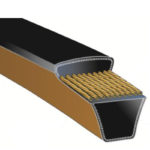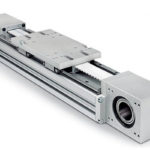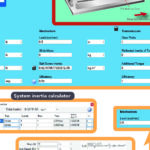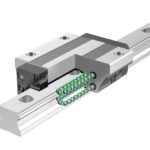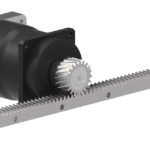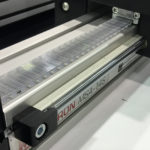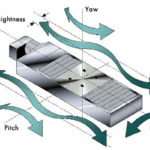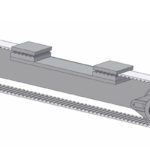Both types of belts commonly used in linear positioning applications — V-belts and synchronous designs — have internal tensile cords that serve as the primary load-carrying component. Or, as one engineer from Gates Mectrol put it, the tensile cords are the “muscle” of the belt. V-belts and synchronous belts are offered with tensile cords of various materials, including polyester, […]
Linear drives (all)
How to calculate motor drive torque for belt and pulley systems
Belt driven linear systems are common in applications that require long travel and high speed, such as gantry robots and material handling and transport. The motors of choice for these systems are often servo motors, for their ability to accurately control position, speed, and torque. Sizing and selecting the servo motor requires determining both the continuous […]
Using software for designing and sizing motion-control systems
Today servomotors abound. Thankfully the art of using speed, torque, and inertia to select from these servomotor offerings for specific applications has become quite automated. By Sixto Moralez • Regional motion engineer | Yaskawa America Inc. Drives & Motion Div. Now, certain sizing and selecting software only requires that design engineers enter a minimum of […]
Güdel gantry robots add gentle touch to bakery automation
In the U.S., about 50 million people a day eat at fast-food restaurants — and about 60,000 of those establishments sell hamburgers. That requires epic volumes of fresh buns every day … and only commercial bakeries with automated operations can output sufficient production volumes. Workhorse Automation Inc. (based in Oxford, Pa.) supplies machines to this […]
Why use linear guides and ball screws with ball chains?
One of the differences between radial ball bearings and recirculating ball linear guides has historically been that radial bearings typically use a cage to separate the balls and control their movement, whereas profiled rail guides did not. But in the early 2000’s, manufacturers of profiled rail bearings began introducing versions with ball cages (also referred […]
New rack and pinion systems available from GAM Enterprises
GAM now offers new helical rack and pinion systems. High quality rack and precision pinions are paired with GAM gearboxes for optimized system performance. Helical rack provides smooth, quiet operation and precision operation. The rack is available in 1-meter lengths in module 2, 3, or 4 and ISO quality 6 or 10. Precision pinions in […]
igus unveils new quick-fill energy chain
The new E4Q energy chain from igus can be opened and closed in seconds without tools and has been specifically developed for the special requirements of unsupported lengths and long travels. igus, the Germany-based manufacturer of motion plastics, unveiled a prototype of the new E4Q in April at Hannover Messe. The chain links have a […]
Linear “lineup” impressive for Robotic Summit in June: Attend for technology insights
Robots aren’t all humanoid and SCARA; some take the form of linear-motion arrangements. In fact, we’ve covered how Cartesian arrangements in particular offer better energy efficiency and price points than more stereotypical robotic arrangements. You’ll get copious amount of information on such linear designs and technologies at the 2019 Robotics Summit (on commercial-robotics design, development, […]
What are planar errors and how do they affect the accuracy of a linear motion system?
In an ideal world, a linear motion system would exhibit perfectly flat, straight motion and reach the intended position with zero error every time. But even the highest precision linear guides and drives (screws, rack and pinions, belts, linear motors) have some errors due to machining tolerances, handling, mounting, and even the manner in which […]
How to measure synchronous (toothed) belt tension
Updated June 2019 || One of the benefits of synchronous belts is their ability to operate with lower tension than their V-belt counterparts. And once the proper tension is determined and applied, synchronous belts rarely need re-tensioning. But improper tension in a synchronous belt drive system — either too low or too high — can […]

